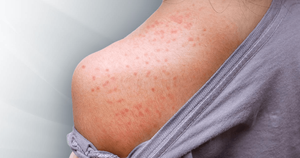Surveillance
Outbreak Control
In addition to disease prevention at the individual level, vaccination represents the cornerstone of measles management in public health. Endemic measles was eliminated from the United States in 2000; this means that continuous transmission of MeV in the population lasting ≥12 months was successfully interrupted. Nevertheless, local outbreaks of measles continue to occur, with a peak of 1,274 cases nationwide in the pre-COVID year 2019. While the number of measles cases in the United States decreased dramatically in the pandemic (to only 13 cases in 2020), the number appears to be increasing again (with 167 cases in the first half of 2024). Furthermore, vaccination rates have decreased since the COVID pandemicbegan, with MMR coverage among kindergarten-age children dropping to 93%, below the 95% target which represents a threshold for herd immunity. Rapid recognition, reporting and investigation of possible measles cases is of crucial importance for curbing the…
To continue reading
Log in or register to continue reading. It's free!
OR
By signing up to create an account, I accept Healio's Terms of Use and Privacy Policy.
Outbreak Control
In addition to disease prevention at the individual level, vaccination represents the cornerstone of measles management in public health. Endemic measles was eliminated from the United States in 2000; this means that continuous transmission of MeV in the population lasting ≥12 months was successfully interrupted. Nevertheless, local outbreaks of measles continue to occur, with a peak of 1,274 cases nationwide in the pre-COVID year 2019. While the number of measles cases in the United States decreased dramatically in the pandemic (to only 13 cases in 2020), the number appears to be increasing again (with 167 cases in the first half of 2024). Furthermore, vaccination rates have decreased since the COVID pandemic began, with MMR coverage among kindergarten-age children dropping to 93%, below the 95% target which represents a threshold for herd immunity. Rapid recognition, reporting and investigation of possible measles cases is of crucial importance for curbing the spread of the disease during outbreaks and for maintenance of elimination status in the United States.
Reporting
All suspected cases of measles must be reported by healthcare personnel to the local health authorities in the state or territory; the local health authorities are then required to notify the CDC of the case(s) within 24 hours. The CDC recommends active surveillance of possible measles cases in the community where confirmed measles cases occurred. Clinical specimens should be obtained, if possible, so that laboratory testing can be undertaken for viral detection. Active surveillance should continue until a minimum of two incubation periods after the last confirmed case. Laboratory tests for measles are described in Presentation and Diagnosis; the CDC recommendations for appropriate uses of each test are shown in Figure 2-3.
Once an outbreak is confirmed, control of its spread becomes paramount. Epidemiological data from the local outbreak should guide decisions for containment. In addition to persons residing in the same household as patients with confirmed cases, CDC-designated priority groups/settings for contact investigation include:
- Close contacts other than household (e.g., individuals who shared the same room or airspace in various settings);
- Health care settings because of the risk of transmission to individuals at high risk of serious complications; and
- Schools/childcare centers, colleges, or other close settings where a defined number of persons congregate (e.g., churches) because of high contact rates and transmission potential.
Recommendations for control measures in educational and healthcare institutions are shown in Table 4-4.
If epidemiological data are suggestive of another setting as the epicenter of the outbreak (e.g., a restaurant, stadium, mall, etc.), public announcements through traditional and social media may be used to quickly reach individuals that may have been exposed. During the investigation of suspected and probable cases, post-exposure prophylaxis (PEP) should be given to contacts without laboratory confirmation. For more information on PEP and recommendations for PEP, see Assessment and Treatment. Non-immune individuals exposed to measles that are unable or unwilling to receive PEP should be excluded from affected institutions until at least 21 days have passed since the onset of rash in the last case of measles. While quarantine of exposed persons is generally of limited use, it can help contain the spread of measles in populations with a high proportion of unvaccinated persons or individuals at high risk.

References
- Bankamp B, Takeda M, Zhang Y, Xu W, Rota PA. Genetic characterization of measles vaccine strains. J Infect Dis. 2011;204 Suppl 1:S533-S548.
- CDC. Assessing Measles Outbreak Risk in the United States. Published April 4, 2024. Available at: https://www.cdc.gov/ncird/whats-new/measles-outbreak-risk-in-us.html. Accessed August 15, 2024.




